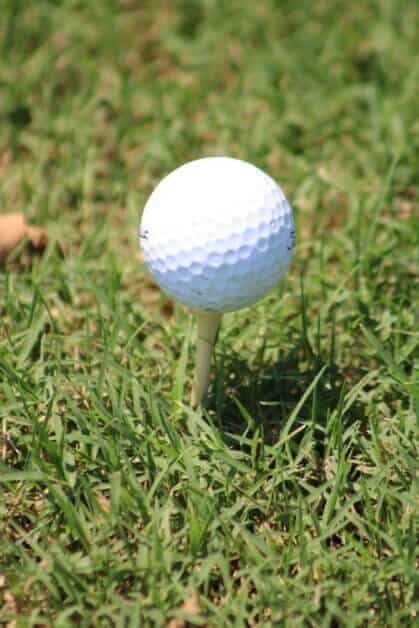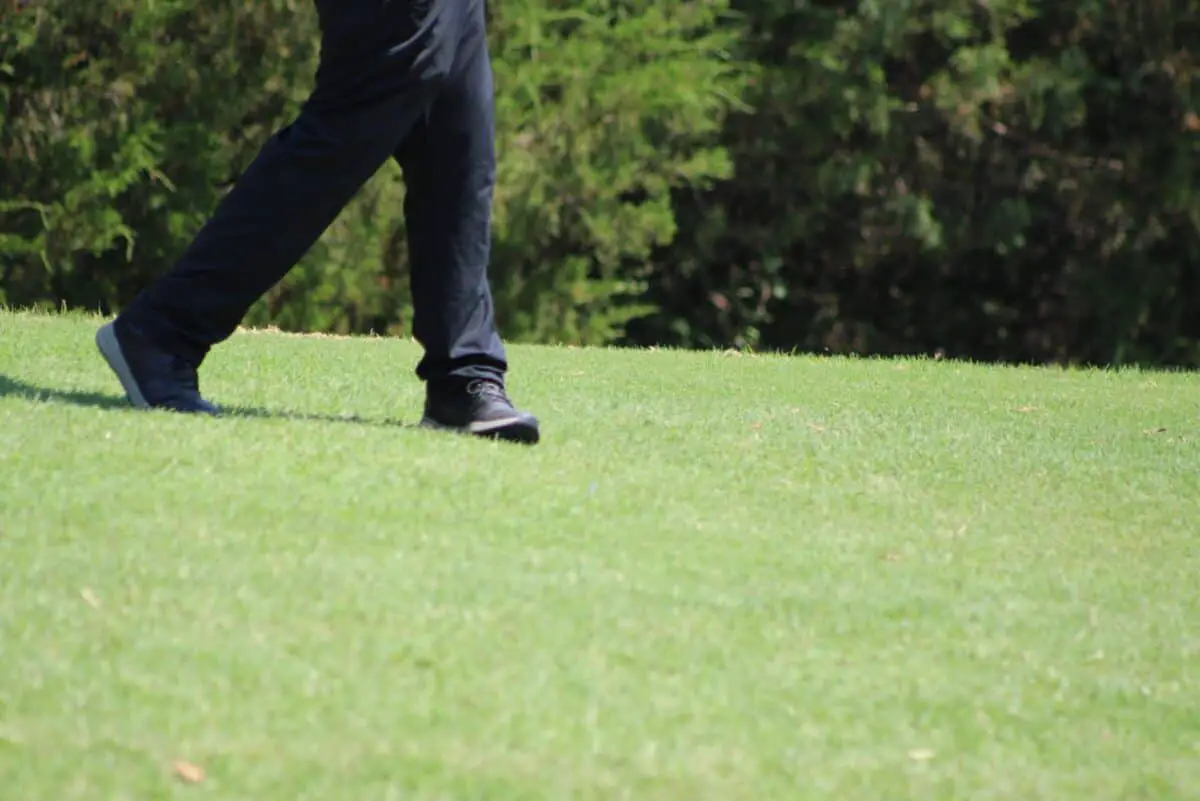Imagine you’ve struck a shot with your driver, and the ball achieves a great height only to cover a smaller distance than you expected. If you’re a golf enthusiast, odds are you’ve probably had this experience. It might have seemed confusing as you might have thought it was a great drive when you hit it but what really happened was the driver had too much spin, which reduced the distance your golf ball covered.
This is a common problem with golfers, but there are a range of solutions if you’re looking for the best driver for low spin that can help your shots achieve great distances by cutting down on the spin rate.
The spin rate is measured in revolutions per minute (RPM), and most low spin drivers produce a spin rate between 200 and 400 RPM. The rate can be even higher if the driver has the right shaft. If the launch conditions are right, the lower the RPMs, the less the ball will spin and the greater distance it will cover.
To find the right driver, you have to consider the head shape and shaft length but first, let’s look into if you actually need a low spin driver to up your game.
Should You Use a Low Spin Driver?
The driver is an essential club to start your game. They come in different sizes, shapes, styles and cater to different swing speeds as well. Finding the right driver is important to your game, so it requires a thorough assessment through trial and error. It would be best to focus on finding the right driver for your particular style of playing, which is why some golfers might benefit from the low spin driver.
It’s better to know beforehand that low spin drivers are not for everyone, which is highlighted by the fact that only 10% of drivers sold are low spin models. They might not be everyone’s cup of tea because certain golf players might feel like the standard model provides the optimum amount of spin and makes it easier for them to hit straighter drives onto the fairway.

Whether you should invest in a low spin driver or not depends on you. Low spin models usually perform better if you are a hard hitter who has higher swing speeds. This means that you spin the ball more than the optimum speed designated for your club. The models are also better suited for golfers who hit down on the ball with the driver and have a downward attack angle as a low spin driver can potentially allow you to improve your performance on center hits. However, there are drawbacks despite the forgiveness these clubs offer.
If the low spin drivers result in slightly off-center hits, there is a significant drop in accuracy and carrying distance. Accuracy is an important factor every golf player considers before selecting their clubs. Usually, the low spin models don’t have very stable clubheads, which affects the accuracy level. This is why a degree of consistency in shots is required from golfers to benefit accordingly.
A higher spin can also produce increased accuracy, which is highly preferable in drivers. Even if you decide to purchase a low spin driver, it is essential that you get it custom-fitted to ensure it performs as expected.
Why Should I Choose a Mizuno?
Mizuno has a history that spans over a century. Originating from Japan, the brand established a global presence focusing on improving production to make superior products for sports players. The company produces specific equipment for Japan, the United States, and Europe. Product offerings are diversified and offered in different regions. There is also an increased focus on its Japanese identity, which it does by reserving certain product lines only for the Japanese market.
Mizuno has always been a strong player in the iron market for golf. At one point, they were even the number one iron brand on the PGA Tour. The superior quality of their iron range also inspired their slogan, “nothing feels like a Mizuno.” While Mizuno might have faced a dip in popularity, in recent years, it’s been trying to regain its share in the golf equipment and accessories industry by putting its clubs in the hands of professional golfers.
Mizuno has expanded its portfolio to include different golf clubs such as drivers, woods, etc., to establish their superiority in irons and the entire range. Constant innovation and testing have allowed Mizuno to produce state-of-the-art equipment that can become staples in every golf bag. They even introduced different series of products to ensure there is something for every golf player.
Mizuno ST-Z Driver Review
Overview
Mizuno has introduced its ST range of drivers and fairway woods. These clubs were developed after three years’ worth of research and refinement of Mizuno’s previous models, including the ST190 and ST200. The latest driver line-up includes the ST-X and the ST-Z. This year Mizuno has not focused on its G series, a low spin model that features movable weights. The main models of this year are part of the X and Z series.
Mizuno came up with the ST-X and ST-Z as a revamp of the ST-200 series. They took what was good about the previous models and used innovation and technological advancements to improve the look, feel, sound, and performance of the drivers.
The X and Z series are named according to the distribution of mass in the clubhead. The ST-X model’s mass is focused along the X-axis towards the heel, which provides a draw bias. On the other hand, the ST-Z has its mass pushed along the Z-axis, which makes the weight focus towards the bottom and towards the back of the club. This increases forgiveness and offers a low spin efficiency.
The Mizuno ST-Z driver provides a higher MOI (forgiveness) as the clubhead is designed specifically to produce a low to mid-spin. The lower spin is achieved by ensuring the center of gravity is close to the neutral axis of the club. The driver offers low spin with forgiveness which is a common mix of features available in the market.
The club also features a neutral bias which means it does not have any predisposition to fades or draws. At the same time, the weight is located centrally and inside each carbon-fiber sole piece at the lower level of the club, similar to the ST-X model in the series. The weight is distributed using two carbon-fiber sole plates balanced on both sides of the center to ensure the weight is adjusted proportionately.

Features
CORTECH Beta Titanium Face
The club’s face is a flat surface that is used to strike the ball and is crucial to determining the speed of the trajectory. The surface is normally inclined at an angle known as the loft, which varies from club to club depending on its purpose.
The material for the clubface also directly impacts the performance of the club. In the case of Mizuno, they have not changed the material from its ST-200 series. They use forged SAT 2041 Beta Titanium for the structure as they believe it provides the right amount of strength and performs better than anything the competition has to offer. The material also maintains its characteristics, and its high tensile strength resists micro fractures for longer than other titanium materials used to make faces.
The beta-titanium has a finer grain structure, which means the material is less prone to damages, increasing the product’s life expectancy and durability. This also prevents the speed of the face from changing over time due to wear and tear. The material also has a higher strain rate recovery which means it returns to its original shape faster than similar metal compounds, which increases the speed of the ball and prevents loss of energy.
The alloy is comprised of 75% titanium, 20% vanadium,4% aluminum, and 1% tin which Mizuno considers an optimum ratio for the alloy. The structure of the driver’s face has also been re-engineered to strategically thin the area in the lower portion of the face, which boosts speed in case of lower face contact.
After working for years with the beta-titanium material, Mizuno has developed a better understanding of the material limits through research and testing to create clubs that meet the USGA rules. The new model has been refined to maximize the returns from Mizuno’s Beta Ti face.
WAVE Feature Optimization
The current Mizuno drivers, specifically the ST-X and ST-Z, incorporate the proprietary WAVE sole, which the company specifically designed. The WAVE feature has been developed by Mizuno and used for several generations in their products, and they have been used in golf clubs for the past few years.
The material is specifically designed to contract and expand at impact, increasing ball speed and ensuring minimum energy transference loss. The soul removes stress on the club’s face by absorbing energy deflection in the lower area of the face.
Additionally, the technology also leads to a larger Coefficient of Restitution (COR) area. The COR refers to the loss of energy when the club collides with the ball, and the COR area is the portion of the face that can produce the greatest speed. Energy is also channeled through the point of contact to ensure the ball reaches maximum height and distance.
CT Rib Structures
The driver also has CT rib structures that connect to the top of the Mizuno models’ faces. Together with the WAVE sole, these structures are responsible for expanding the COR area along with providing increased durability while keeping the characteristic time (CT) within agreeable limits of the standard.
The CT measures the time in milliseconds there is contact between the driver and the ball, and Mizuno has focused on improving the driver’s speed by focusing on the COR without increasing the CT.
The Look
Mizuno has introduced aesthetic refinements to update the design and feel of its carbon fiber crown. The new-look features a glossy black crown with a visible carbon weave pattern on the head and a broad and leading-edge encasing the weave pattern. This makes the design more visually appealing than its previous models, which previously incorporated the color blue in their design. The new design is a more sophisticated and sleeker look that any golfer would be glad to show off.
Sound and Feel
The model has been defined as having dense feedback. Upon impact, the sound produced from the driver and ball colliding is more solid than the previous models. Engineers have carefully designed the driver to ensure its sound radiates power.
Specifications
Let’s take a closer look at exactly what the Mizuno ST-Z driver has to offer in terms of the configuration. The shaft is also made of graphite to ensure the user has a smooth experience, and the model has options for both right-handed and left-handed players.
ST-Z DRIVER SPECIFICATION
|
Model |
Loft Range° |
Lie Range |
CC |
Length (inch) |
|
ST-Z 9.5 |
7.5-11.5 |
56.5-59.5 |
460 |
45 |
|
ST-Z 10.5 |
8.5-12.5 |
56.5-59.5 |
460 |
45 |
Dexterity:
ST-Z 9.5 (Available for both right-handed and left-handed)
ST-Z 10.5 (Available for right-handed players only)
Final Thoughts
If you decide to go for a low spin model because of your high swing speeds or preferences, the Mizuno ST-Z is potentially the best low spin driver in the market, making it a worthy addition to your golf bag. This new model builds upon the features of the previous Mizuno drivers and provides enhanced performance through its technology. With an increased focus on speed, you are about to make long-distance shorts that cover more ground and make for an interesting play.
- Should Tee Boxes Be Level? - January 23, 2024
- 3 Hybrid Distance - November 15, 2023
- Innovations in Golf Mobility: An In-depth Review of Top Golf Scooters - October 12, 2023

